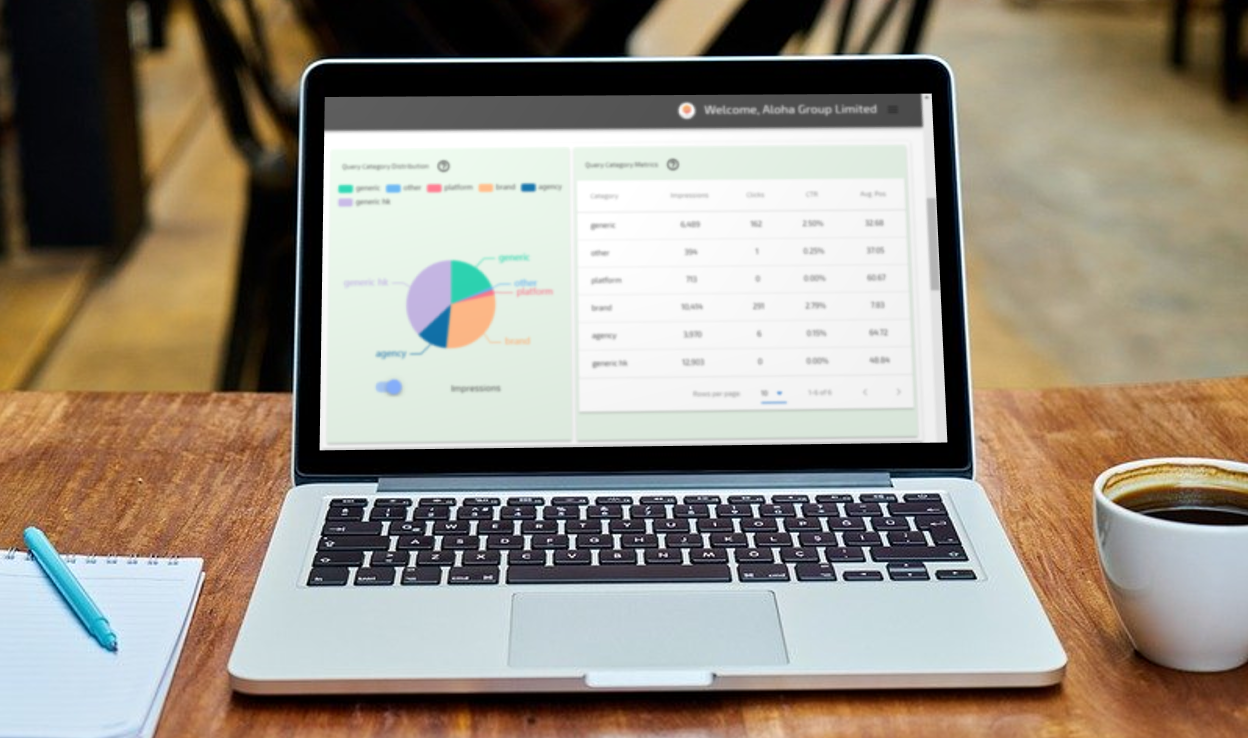Previously, we’ve talked about accessing search query data from Google Search Console. For a well-known brand’s website, there is often too much query data. Some marketers might directly go into studying the top and least performing keywords. However, in our SEO best practices, we recommend classifying query data into categories first for a more in-depth keyword analysis. Let us share why.
1. See Traffic Contribution by Groupings
Take an example of a brand that sells work outfits ranging from suits, shirts and shoes to work dresses. Here are some of its queries.
| No. | Query | Impressions | Clicks |
| 1 | “Suit for men” | 14,000 | 1400 |
| 2 | “Men shoes for work” | 12,000 | 1200 |
| 3 | “Work dress” | 12,000 | 400 |
| 4 | “OL dress hk” | 10,000 | 300 |
| 5 | “Smart casual dress” | 9,000 | 300 |
| 6 | “Office dress hk” | 8,000 | 200 |
| 7 | “Formal dress” | 6,000 | 200 |
| 8 | “White shirt women” | 5,000 | 200 |
Query no. 3-7 have similar meanings or search intentions.
We want to see a complete picture of website traffic contribution by groupings.
Individual queries drive low amounts of traffic. We see that “suit for men” seems to drive a larger website traffic than other queries due to its higher individual impression volume.
But when we group keywords of similar meaning “work dress” together, and analyze by group level, we will discover that this group of work dress related keywords actually contribute to a significant proportion of the website traffic.
Grouping keywords together by categories helps marketers to understand the actual demand of that search intention. This provides a better visibility on actual website traffic contributions. Learn more about how to do query categorization in our another blog.
2. Systematic Analysis and Next Steps
Grouping the queries gives a systematic and clear direction for keyword and content analysis. All related keywords are organized into a group for single analysis instead of having them scattered.
Marketers can also utilize SEO tools available in the market such as Quanery, which uses machine learning to categorize queries, making query grouping fast and easy.
3. Understand Brand Position Reflected through Search Results
Brand position can be reflected by different website traffic metrics. For example,impression implies the search volume and demand from the market, CTR tells you how relevant users thinks your brand is to the search query. Ranking tells you how relevant to the search query Google thinks your brand or website content is.
Continuing with the example above, let’s see the search data and performance of two of its query groups: 1) Work dress & 2) Women Shirts. For simplicity, here we assume both query groups have good ranking.
What can we tell about brand position in the work dress market?
Given that both shirts and work dress webpages has a good ranking on Google, “work dress” related query group has gained higher impressions. This implies a higher search volume and stronger market demand for this product.
However, its lower CTR reflects that, despite the high demand, a lower proportion of users turn to our brand for work dresses. In other words, the work dress market has other competitors in the market that are more preferred, and the brand’s positioning in this market is not as strong.
What can we tell about brand position in the shirts market?
For “shirts” related query group, CTR is higher despite a lower impression. This reflects that although the demand for shirts is not as much as that of work dress, a larger proportion of users think that our brand is relevant to “shirts” and click into our website. It is a possible indicator that our brand position for shirts is stronger compared to work dress.
4. Discover New Opportunities for Content Optimization:
Relevant content is a key area to boost your website SEO. Having queries organized in categories, we can spot out potential topic area that the brand can boost.
For example, considering this same brand selling work outfits, when we look at the ranking details of individual queries, it is difficult to draw conclusion from the data on which area we need to boost:
| Sample of queries | Average Position |
| “Business women shirts” | 1.14 |
| “Slim women dress” | 1.56 |
| “Slim shirts” | 2.27 |
| “Office shirts for ladies” | 2.76 |
| “Business formal” | 2.89 |
| “Smart men shirts” | 2.93 |
| “Shirts for him” | 3.12 |
| “Work flats” | 4.37 |
| “HK OL dress” | 4.46 |
| “Leather shoes” | 4.62 |
| “Smart ties” | 4.71 |
| “Blazer and suit” | 5.81 |
| “Elegant black flats” | 6.22 |
| “Men oxford shoes” | 6.26 |
| “Designer work dress” | 9.25 |
| “Smart casual shoes” | 9.62 |
| “Ties for him” | 9.89 |
| … | … |
After sorting out the queries by searched products, we have this list of query categories and average position data:
| Query Categories | Average Position |
| “Women shirts” | 1.34 |
| “Men shirts” | 2.23 |
| “Women work dress” | 2.31 |
| “Women shoes” | 6.36 |
| “Men ties” | 6.57 |
| “Men blazer” | 7.23 |
| “Men shoes” | 9.01 |
Going down the category list, we can identify that query categories such as “Women shoes”, “Men ties, “Men blazer” and “Men shoes” have lower ranking and can be further optimized. This provides a clear direction for new content – we can develop content ideas related to shoes, ties and blazers.
Once we identify the content direction, keyword research and analysis can be followed to study market trends of that particular area, and explore attractive and relevant topics in the market.
With the advantages above, let’s get started on categorizing your query data. Take some time to go through our related blog which talks about HOW to categorize search queries.
Don’t forget to register for a free trial for our SEO tool Quanery, where you can collect unlimited search query data of your website, and categorize them into groups by AI capabilities.




